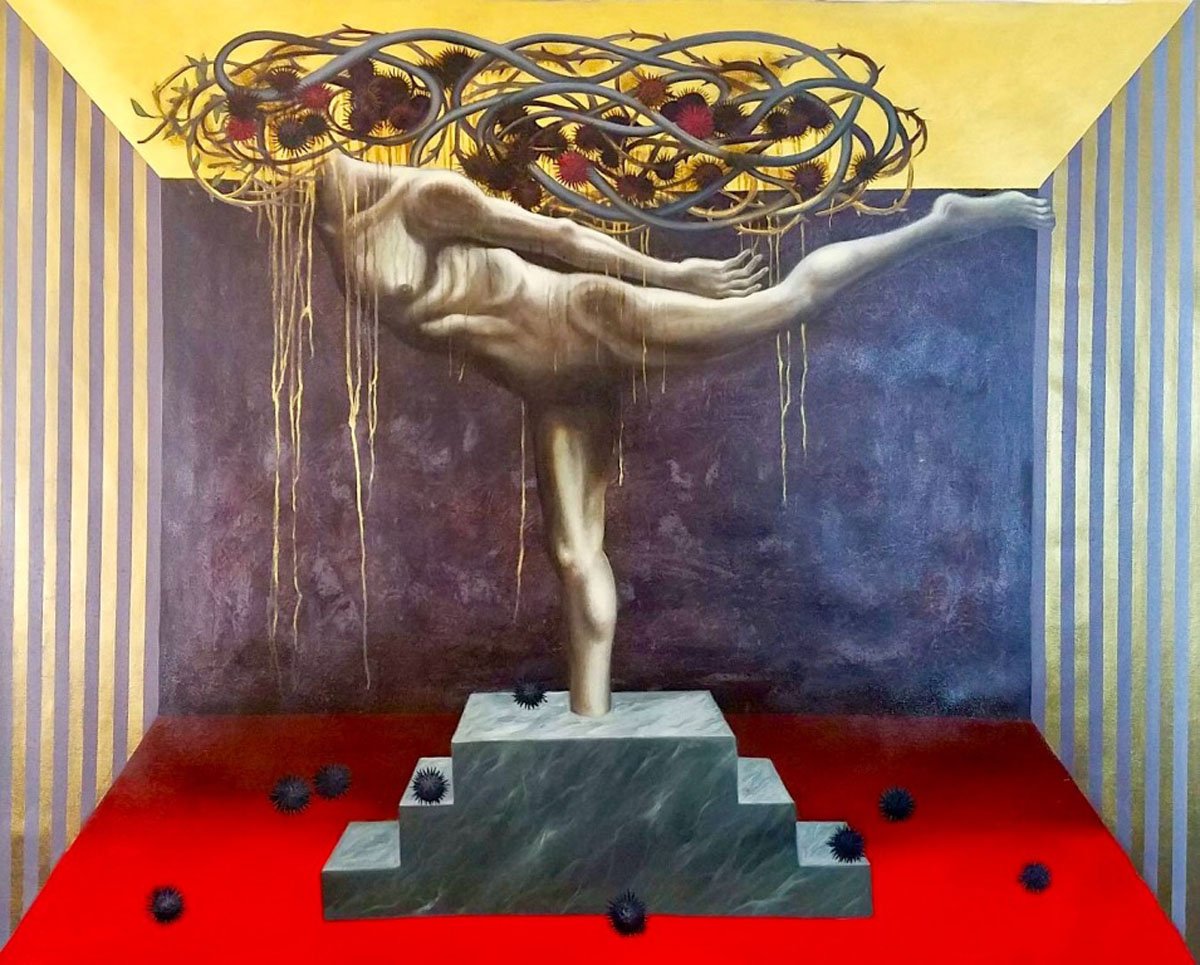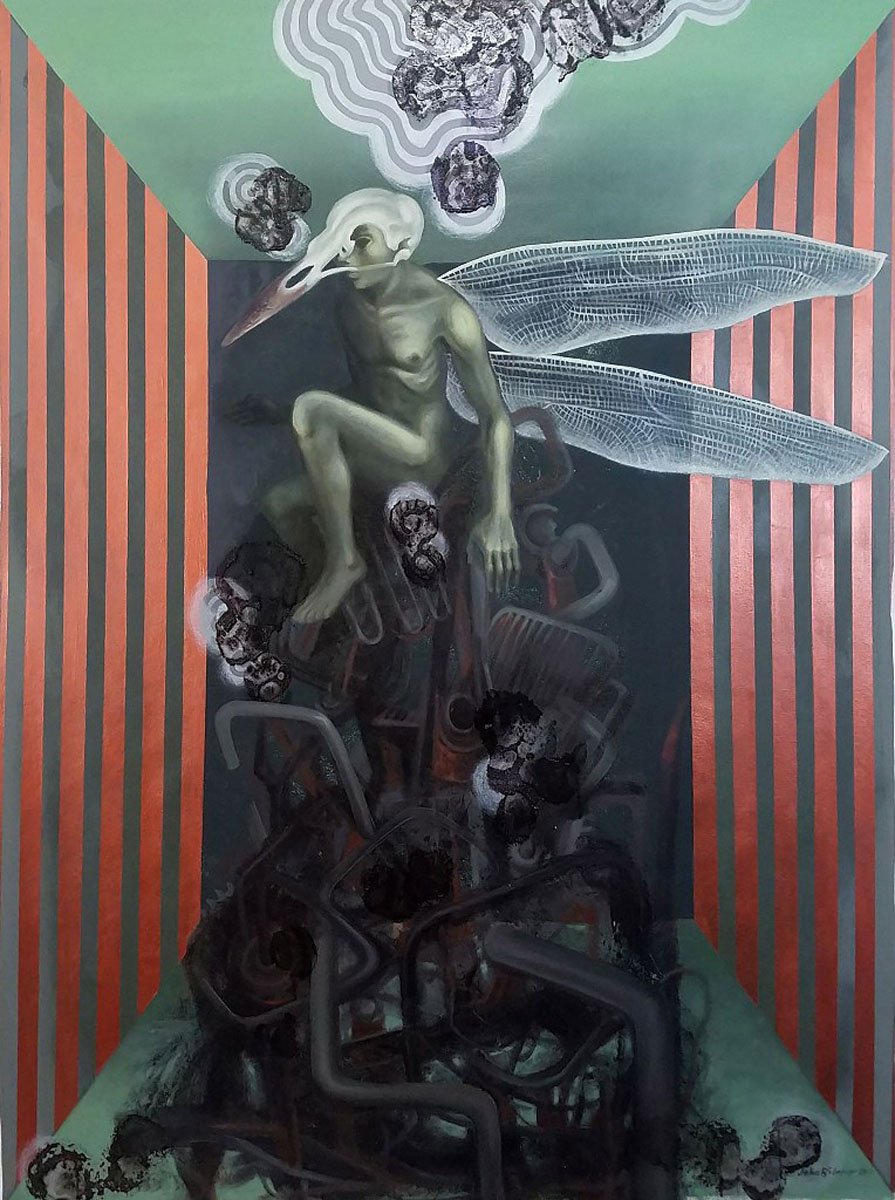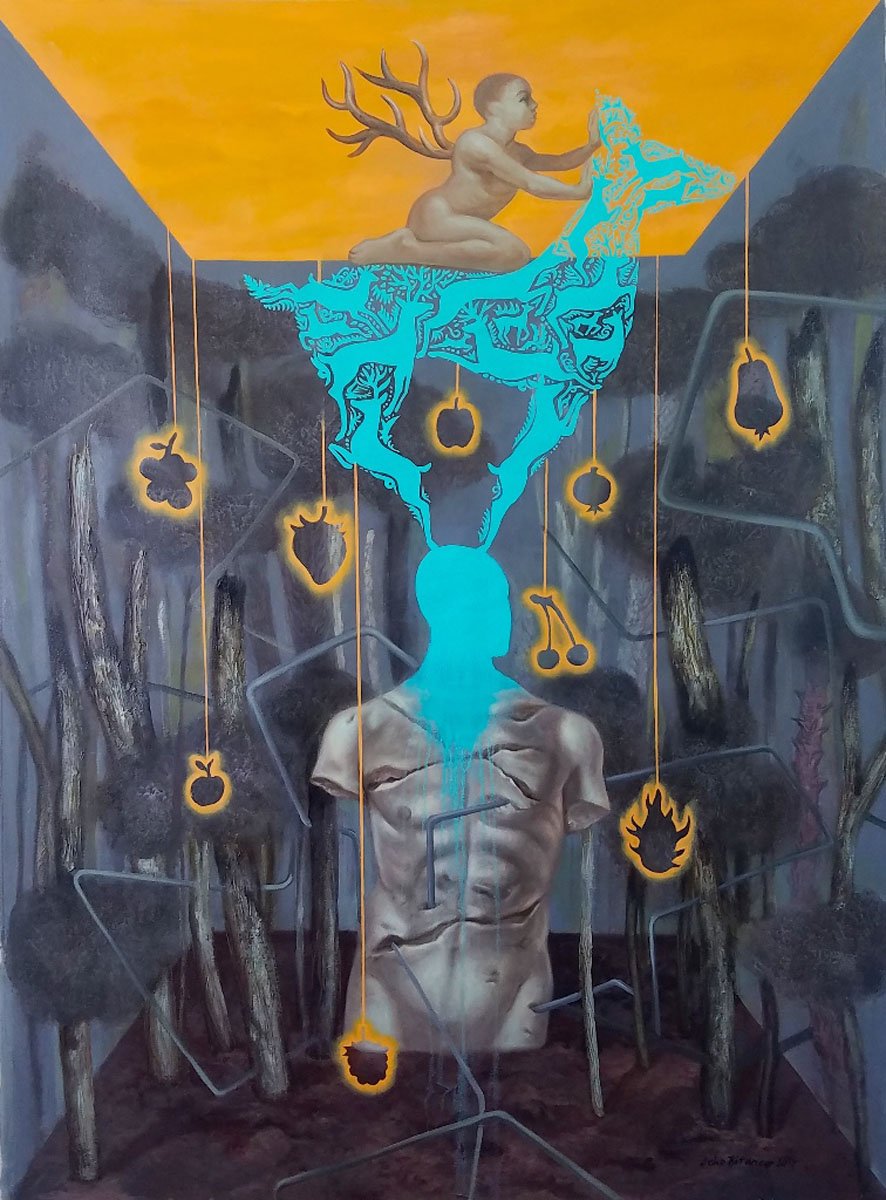Paradox of Living
Start
03 August 2017End
20 August 2017Artist
Jeho BitancorGallery
Altro Mondo Arte Contemporanea, 3/F Greenbelt 5, Ayala Center, Makati City, Philippines 1229
JEHO BITANCOR: QUESTIONS ON THE “PARADOX OF LIVING”
With the skill and passion of a confident weaver of confessional tales, Jeho Bitancor presents his solo show “Paradox of Living” at the Altro Mondo Gallery. But more than just being narratives of the human condition, Bitancor creates visual dramas laced with metaphors and symbols. This is one artist who puts painting in the service of asking Life’s Big Questions.
True, his name has always been associated in Social Realism, whence he emerged way back in the Eighties. What differentiates his works from those of his colleagues, however, was the strong vein of Expressionism inherent in his works and his handling of light, which was borderline tenebrismo. The dramatically limned figures drawn from the underbelly of the metropolis were shrouded with dramatic shadows and highlighted with radiant light. (Remembering some of his earlier shows, honestly, they brought to one’s mind both Caravaggio and a mellowed El Greco.)
His current works, however, have transcended those works – and rightly so – for Bitancor’s sensibility has very obviously matured, borne no doubt by the passage of the decades and his own personal transformation. As instantly evident from the title of the show, “Paradox of Living,” Bitancor has evolved his works to arrive at the plane of existential investigation, so far removed from the images of psychic torments, of poverty and injustice over which the Social Realists interminably rued to a common chorus.
Perhaps not surprisingly, there is a marked theatricality to these works, dealing as they do with the imponderables of human existence, full of declarations crystallized in such works as: “I Am What I Am Not” and “I See No One But Me.” Moreover, Bitancor’s human figures are presented in choreographic stances, even acrobatic postures, as in “Inhabiting False Heavens,” in the descent of the celestial child in “Ties That Bind,” and in the Adam and Eve resonances of “Rebirth.”
One imagines Bitancor as a pictorial master of the mise-en-scene. The prevalent presence of the box as a compositional device, by turns representing a cage from which one seeks release, and a stage, with its revelations of truth in various guises of contradictions (the seduction of illusions, the futility of self-centeredness, the lure of ceaseless temptations) and a Beckett-like conundrum of absurdist perceptions of reality. The figures seem to undergo either a spiritual metamorphosis, a cathartic liberation from the chaos and madness of living, or the familiar and universal identity crisis.
By his own admission, Bitancor can articulate all these musings and ruminations only through image-making, whereupon meanings engender, if not enlightenment (for certain questions are better left unanswered, like a zen koan), then to further probing, possibly leading to more puzzlements.
Suffice it to say that Bitancor’s images are visual provocations triggering the unanswerable questions on the paradox of living.
-CID REYES












